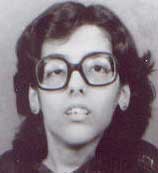Triumph of the spirit
By Venkatachari Jagannathan | 18 Apr 2001
If you passed her in the street, little would one  know that this physically challenged smallish woman is perhaps the most influential woman in the Indian insurance industry. She may be frail-looking but her intelligence places her among the country’s highest paid executives. She is 41-years old Meena Sidhwani, the chief actuary of ING Vysya Life Insurance Company, a new private-sector entrant into the Indian insurance industry.
know that this physically challenged smallish woman is perhaps the most influential woman in the Indian insurance industry. She may be frail-looking but her intelligence places her among the country’s highest paid executives. She is 41-years old Meena Sidhwani, the chief actuary of ING Vysya Life Insurance Company, a new private-sector entrant into the Indian insurance industry.
She also holds the distinction of being the first woman to be chief actuary of ING Vysya and is on her way to being nominated to the post of Appointed Actuary of the company. Displaying the indomitable spirit her Sindhi community is generally associated with, she has gone streets ahead by working her way up from the grass root level in the insurance industry. For a person who had to be literally carried to the examination halls, her passing the tough and demanding actuaries examination in three clear years is no mean achievement.
She has come a long way from her early days with the Life Insurance Corporation of India. Today she is busy, often till 11 in the night designing life insurance products and filing the same with Insurance Regulatory and Development Authority (IRDA) for sanction on behalf of her company. ING Vysya Life is a three-way life insurance joint venture between ING Group (holding 26 per cent in the Rs. 110 crore equity), Vysya Bank (49 per cent) and Damani group the balance. The company has got the in-principle clearance from IRDA.
Ms. Sidhwani was born a weak child and her physical challenges set in very early in life. Her father Mr. Athamaram, a central government employee was not able to afford costly treatment, a treatment compounded by the fact that doctors who initially treated her didn't diagnose the problem correctly. Recalls her mother, "As a child, many schools refused to admit her, because of her deformity. I had to go against the advice of many people in sending her to school." But she is a very happy woman today, seeing her daughter flying high.
The physical problems robbed Ms. Sidhwani of her childhood. But as the saying goes, every cloud has a silver lining. Despite her disabilities, she realised that the only way to come up in life was to prove herself through education. Fortunately her mental capacities were exceptional. These were honed sharp with grit and determination. Thus studies became her first and lasting love. "I could not play, but I would rank first in class despite the poor attendance on account of bad health," muses Ms. Sidhwani proudly.
She self-taught herself and even debated with her teachers much to the amazement of her classmates. As a student of Premier High School, Mumbai, she stood first in SSC and also in the Sion area, where she lived. Although she wanted to take up a combination of maths and physics for her graduation, Ms. Sidhwani ultimately joined for a course in commerce at Poddar College of Commerce and Economics, as her favourite choice was not available. "I did not like the prospect of dissecting frogs and the long hours of lab work that would prove to be a strain on my stamina," she says for not opting for biology. As part of extra curricular activities, Ms.Sidhwani participated in college quiz contest called "What is the economic word", patterned on the lines of "What is the good word", a popular quiz program telecast on the state-owned Doordarshan in yester years.
The next hurdle after graduation was getting a job. No private sector company would give her one. Finally it was the state-owned insurance company, the Life Insurance Corporation of India, which gave her one as an assistant in 1982. "After that life was smooth," she recalls. The job gave her the economic security and also the means to pursue her love. So it was once again study time for her. She applied for MA Economics and cleared the course. Further, working in a public sector organisation where promotions are based on qualification and experience, she once again started studying and cleared all the examinations of The Insurance Institute of India. In the Fellowship exam she stood first in the country and won the gold medal in the process. Soon promotions came her way.
What next? The question haunted her. The answer was to become an actuary. First she thought that it would be daunting task and was hesitant. But seeing her track record, her colleagues and more particularly Mr. R. Ramakrishnan - then her superior at LIC, now a consulting actuary- encouraged her. The examinations were written with the aid of a writer (who happened to be her younger sister, now a lecturer at Poddar College of Commerce and Economics, Mumbai) as was done in her college days. Though Ms. Sidhwani managed the complex mathematics symbols herself, leaving only the theory for the writer.
Once again it was promotion time and LIC was subsequently posted into the actuarial department at the head office taking care of pension and group insurance schemes where she was involved in designing and redesigning pension products. "Not only is she strong in theory, she knows to apply the principles into practice, the quintessence of an actuary," certifies Mr. Ramakrishnan.
One notable contribution of her LIC career is the mortality investigation of annuitants. Like LIC’s mortality table, this too will be used by private players. This was the first attempt by LIC to embark on the investigation. Overseas such studies are done by outside agencies with the help of date provided by life insurers. The other contribution is recommending changes in the valuation of super annuation schemes. Ms. Sidhwani recommended the use of what is technically called the Projected Unit Method that gives a stable contribution/premium payment for the scheme holders. As an active member of the executive committee of the Actuarial Society of India (ASI), she was involved in setting up papers for the actuaries examination.
However, her present job at Bangalore has necessitated her resigning from the ASI. But why did she quit LIC, particularly at a time when it was losing actuarial talent and she could have become LIC's appointed actuary in a few years time? And the corporation was a second home, she had put in 18 years of service. "It was not a hasty decision," she strongly says. Finally it was growth prospects and the obvious push to her self-esteem that did it.
For her, the immediate goal is to get the Certificate of Practice from ASI. This requires six more months of work in an actuarial department, to cover the mandated three year period. The Certificate will make her eligible to become an appointed actuary. Currently she has embarked on writing the UK actuarial examination and has only two papers to get the Diploma.
While work keeps her busy, she nevertheless finds time to surf the net. As a Virgo, she exhibits practicality and a matter-of-fact attitude, she has no patience for fiction. "But she is very patient and a kind woman," says her driver.
Looking back Ms. Sidhwani says, "I have no regrets. Had I been a normal person I would have perhaps done things in a different fashion." It is important to move forward and Ms.Sidhwani's ambition is to make original contribution to actuarial science and help the development of ASI.
Truly, hers is a case of triumph of the spirit!





.webp)
















